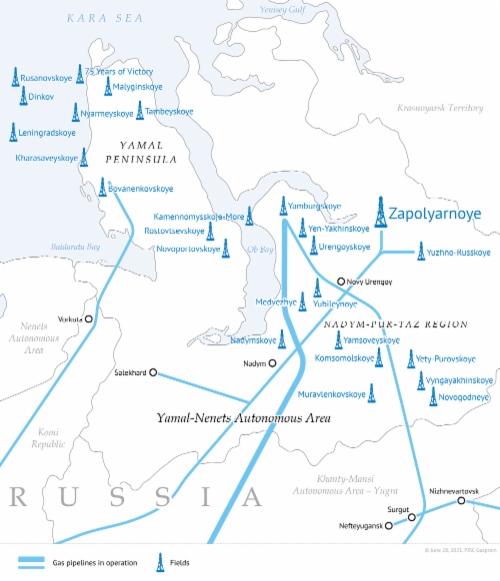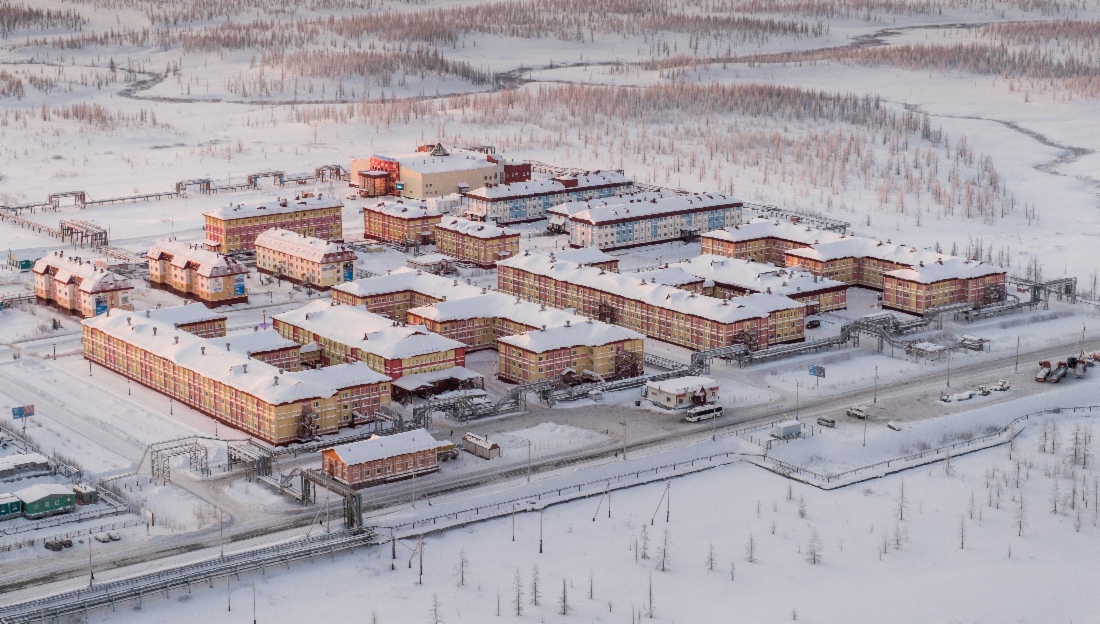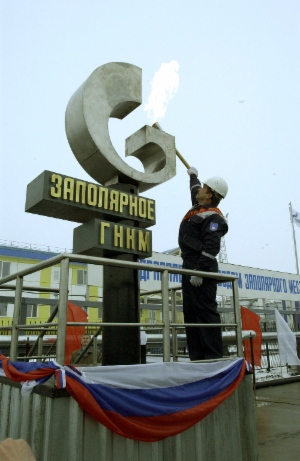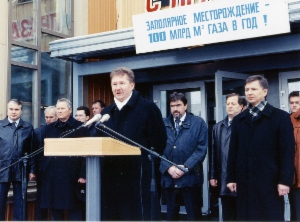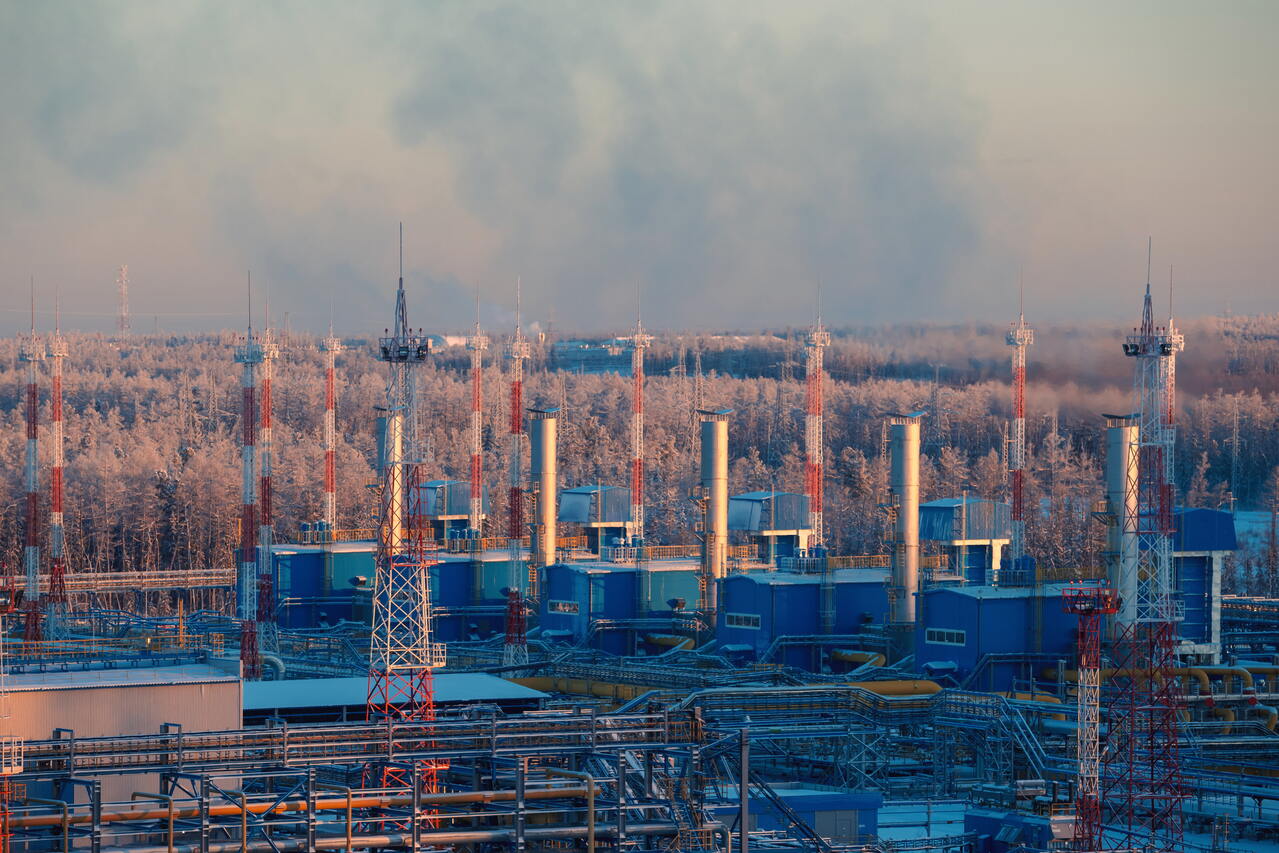The Zapolyarnoye oil, gas and condensate field ranks among Russia’s largest fields in terms of reserves. It also yields more gas than any other field in the country.
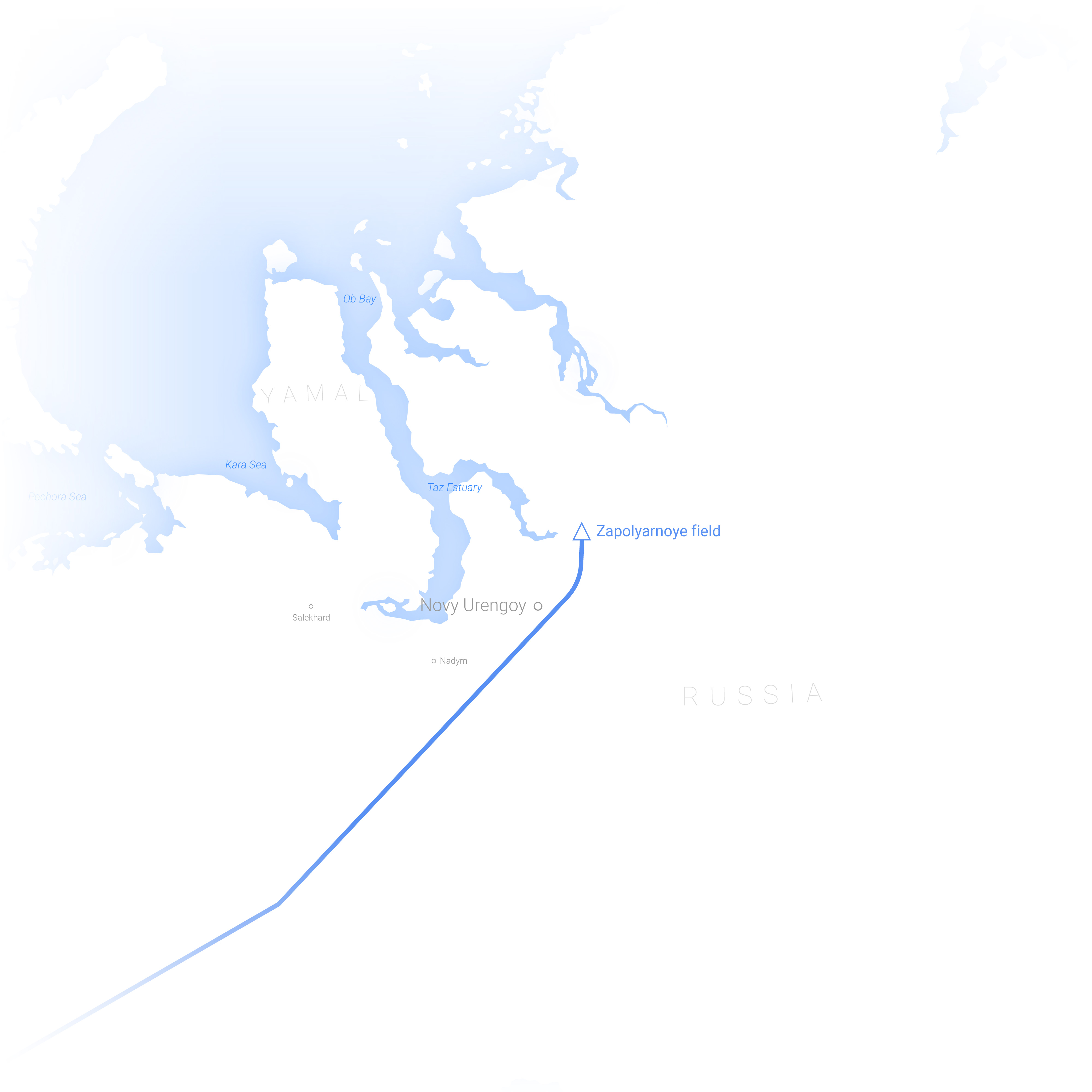
design capacity
initial reserves
initial reserves
design capacity
initial reserves
initial reserves
Figures and facts
The Zapolyarnoye field was discovered in 1965 in the southern part of the Taz District, 220 kilometers away from Novy Urengoy, Yamal-Nenets Autonomous Area.
The field’s initial С1+С2 reserves: over 3.5 trillion cubic meters of gas, around 80 million tons of gas condensate and oil (recoverable).
Design capacity: 130 billion cubic meters of gas per year.
Development
Commercial production from Zapolyarnoye started in 2001 with the development of the Cenomanian deposits and reached 100 billion cubic meters of gas per year in 2004.
In 2011, Gazprom began producing gas and condensate from the deeper Valanginian (Neocomian) deposits.
In 2013, Zapolyarnoye reached its full design capacity of 130 billion cubic meters of gas per year, thus becoming Russia’s most productive field.
Technologies
Gazprom develops Zapolyarnoye using advanced engineering solutions and modern highly reliable equipment designed for operation under severe weather conditions. Specifically, the Company has applied directional drilling methods with sub-horizontal boreholes, a telemechanic system for online control of well operations, and advanced field development monitoring technologies.
Environment
Gazprom’s state-of-the-art technologies and equipment help ensure efficient natural resource management and minimize environmental impacts. For instance, gas flow dynamics studies and geophysical surveys of wells are carried out without releasing natural gas into the atmosphere thanks to the use of telemechanic and telemetry tools. The Company also undertakes continuous on-site environmental monitoring and other environmental efforts.


